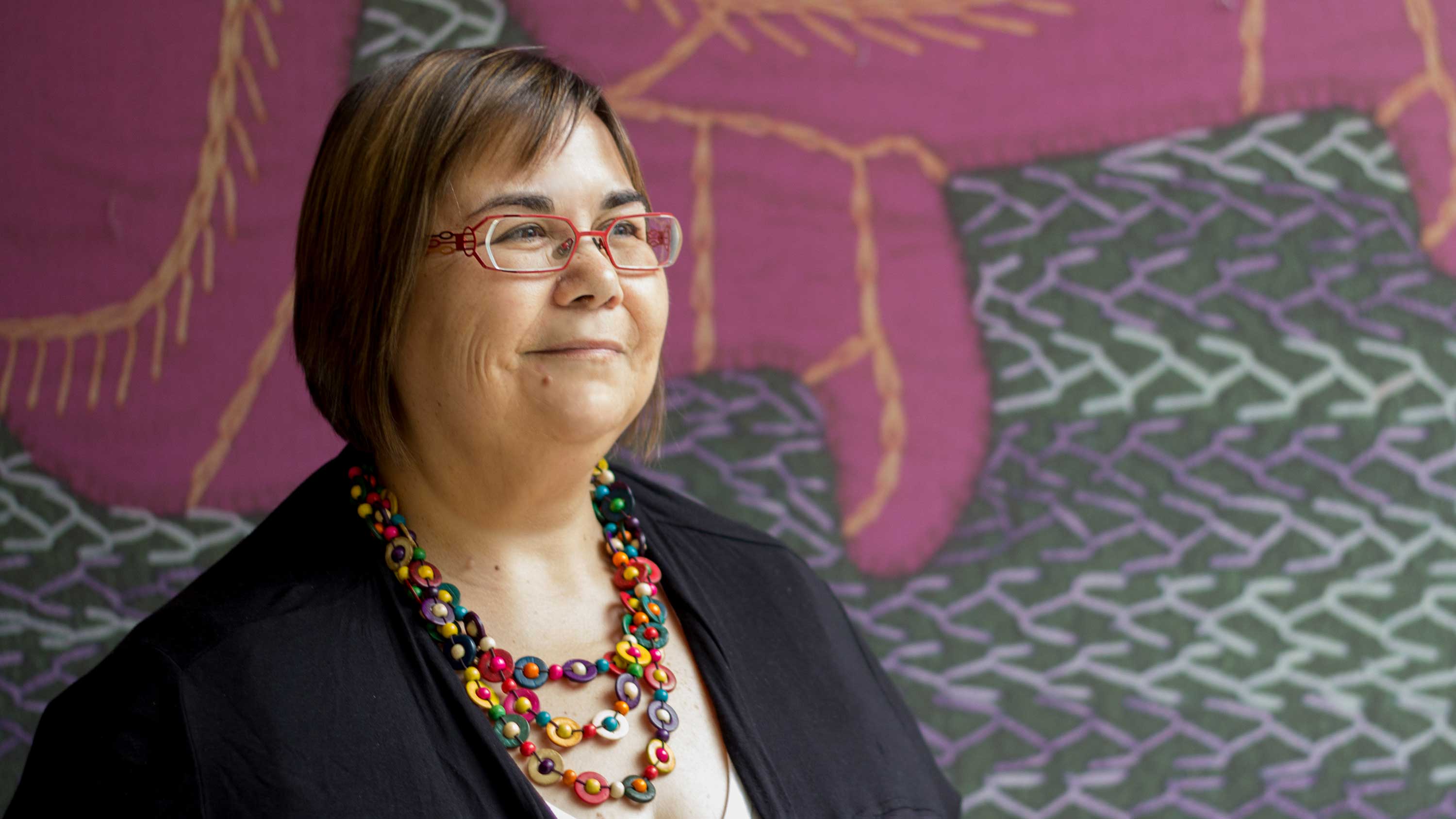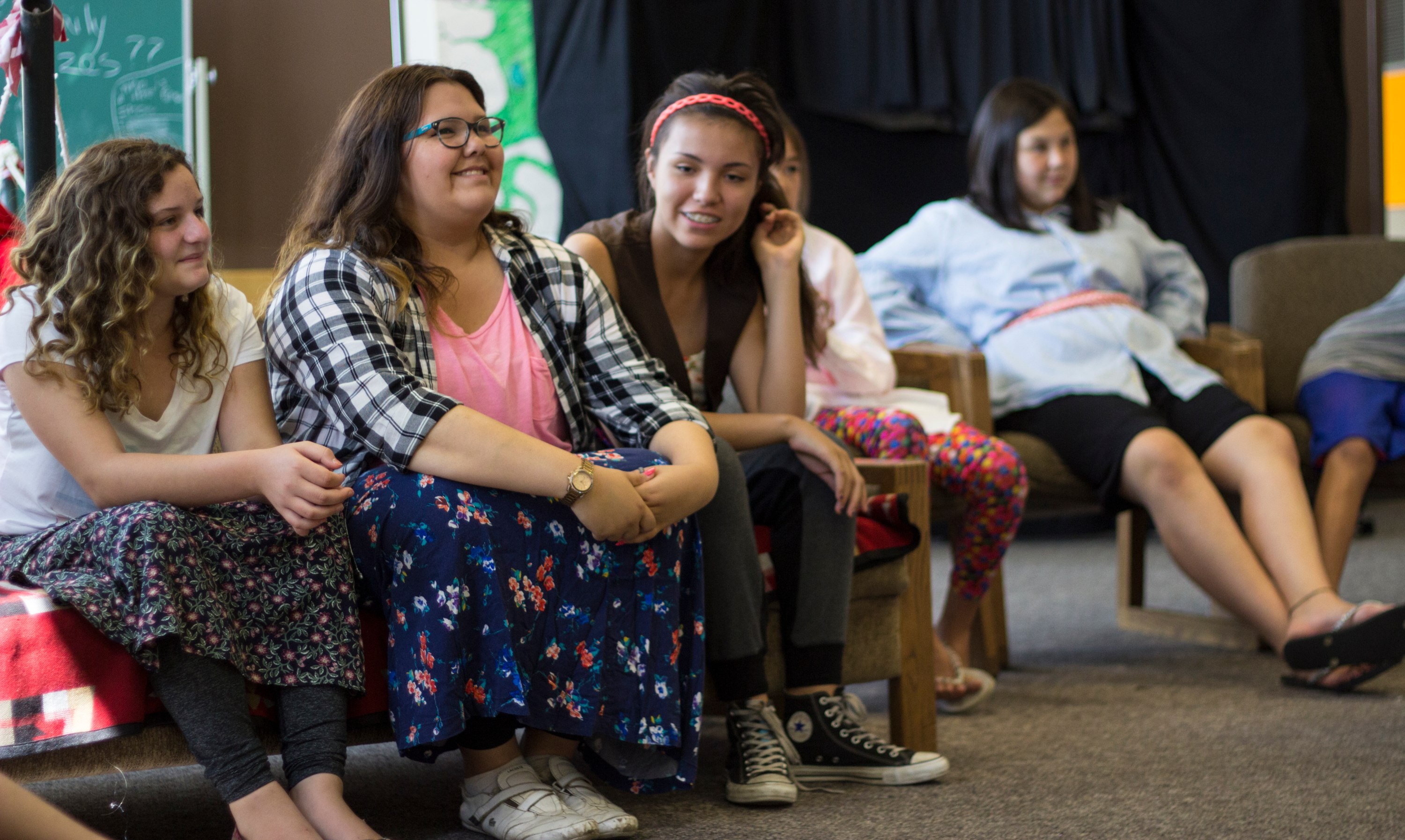Reflecting on the distinctions between her Cree language and English, Elder Mary Cardinal-Collins considers the phrase ‘old lady’ — a term with two very different meanings.
In English the words sound harsh and disrespectful, but she notes the same term in the Cree language, Nohtikwew, embraces a much gentler, richer meaning.
“If you break the word apart, it’s a person who is crowded in their own space, meaning you are surrounded by grandkids and people who love you. It’s not the same as the notion that you are sitting by yourself in an old folks’ home. You’re always surrounded by people, and there’s a lot of respect behind the word,” she said.
It’s that kind of key cultural interpretation and value that Elder Cardinal-Collins, a semi-retired teacher and longtime developer of Cree language curriculum, hopes will be revitalized through Supporting Indigenous Language Revitalization (SILR), a comprehensive new project that supports Indigenous and community-led initiatives to revitalize languages for current and coming generations.
The five-year project, funded by a $12-million grant to the University of Alberta from the BHP Foundation, will provide support to Indigenous nations and communities to successfully carry out their own language revitalization efforts through the coming generations as well as support ongoing initiatives at the university. Underpinning the project is an explicit recognition that Indigenous communities have sovereignty over their language preservation and revitalization goals, programs and data.
“Through this project, we strive to raise awareness, increase support and foster collaboration in language revitalization across Turtle Island. As a community-led project, SILR recognizes the importance of looking to Indigenous communities themselves to ask what’s needed,” said executive director Pamela McCoy Jones.
“Our approach supports the Truth and Reconciliation Commission’s Calls to Action and acknowledges that post-secondary institutions have an important role to play in Indigenous language revitalization. Recognizing and respecting unique differences among communities and diversity of languages and dialects is central to SILR,” she noted.
“Communities are building their capacity for language revitalization in different ways, so their involvement in leading the development of these programs and tools provides flexibility and options for a community’s particular needs.”
“This is essential work for keeping culture and identity,” added Elder Cardinal-Collins, a member of the SILR advisory committee. “A lot of the Cree culture is embedded right into the language, and that’s a characteristic shared by all Indigenous languages.”
SILR activities will draw on the strengths of established Indigenous language and education-related initiatives at the U of A, including the Canadian Indigenous Languages and Literacy Development Institute (CILLDI), Master of Education in Educational Studies cohort in Leadership Supporting Indigenous Language Revitalization, Braiding Stories to Live By, Young Indigenous Women’s Circle of Leadership, and programming and support offered by First Peoples’ House, the Faculty of Education and the School of Public Health.
SILR gives the U of A a valuable opportunity to contribute to community-led revitalization efforts through research and training, and also through Indigenous language initiatives like CILLDI and offerings such as the Community Linguist Certificate, said Florence Glanfield, vice-provost of Indigenous programming and research.
“We provide the opportunity for people to gain the experiences they can gain from a university, and as a university, we want to contribute to the language ecosystem.”

Expanding or enhancing some of those successful U of A initiatives and building new programming will provide communities with strategic approaches that fit their work, McCoy Jones added.
“SILR will be looking to the community to provide direction to determine how cultural arts and technology can be used to teach Indigenous languages. From this engagement we will move forward to support community-led educational curriculum in language teaching and learning.”
Along with supporting Indigenous communities and organizations to undertake revitalization projects, other desired outcomes for SILR include engaging Indigenous teenage girls and young adults as peers mentors, pathways for speakers to become accredited teachers, increasing the opportunities of Indigenous teachers to embed language in their classrooms, expanding language teaching resources and increasing the opportunities of community members to track progress in language revitalization.
Other goals include increasing the number and skills of both formal and informal teachers to weave Indigenous knowledge into their lessons, and providing school leaders with relevant skills to drive changes across the education system to foster Indigenous language revitalization.
Language is vital to connecting future generations with their cultural identity, particularly when used in traditional ceremonies, Elder Cardinal-Collins said.
“Our ceremonies have to be done in our languages; I’m seeing more English being used in ceremonies so young people will understand it, but a lot of the meaning is lost.”
In English, for example, items like drums or pipes used in ceremony are considered inanimate objects, “but those are infused with spirit for the fluent Cree speaker.”
Elder Cardinal-Collins was a student and subsequent graduate of one of the first Indigenous teacher education programs offered at the U of A 40 years ago. Community-led projects like SILR can help bridge gaps like the ones she encountered at that time.
“Ever since I started teaching 40 years ago, we’ve always asked for training for Cree language instructors, and we’ve made strides here and there, but we had no preparation for teaching a second language and no course on methodology for teaching Indigenous languages. Those kinds of things need to be brought to the forefront by people who lived it.”
The SILR also responds to the Truth and Reconciliation Commission’s Calls to Action, in particular No. 16, which calls on post-secondary institutions to “create university and college degree and diploma programs in Aboriginal languages.”
The SILR will advance that work in community-driven, community-led ways, Glanfield noted.
“It moves language revitalization forward in a way that respects the sovereignty of nations.”
SILR is also enriched by the collaboration among various faculties and with the BHP Foundation that helped shape the project proposal, when the foundation approached the U of A to explore the potential for an Indigenous language project, Glanfield noted.
“We gained an understanding of one another and how we could do this work. It led to a model of how the project can unfold.”

